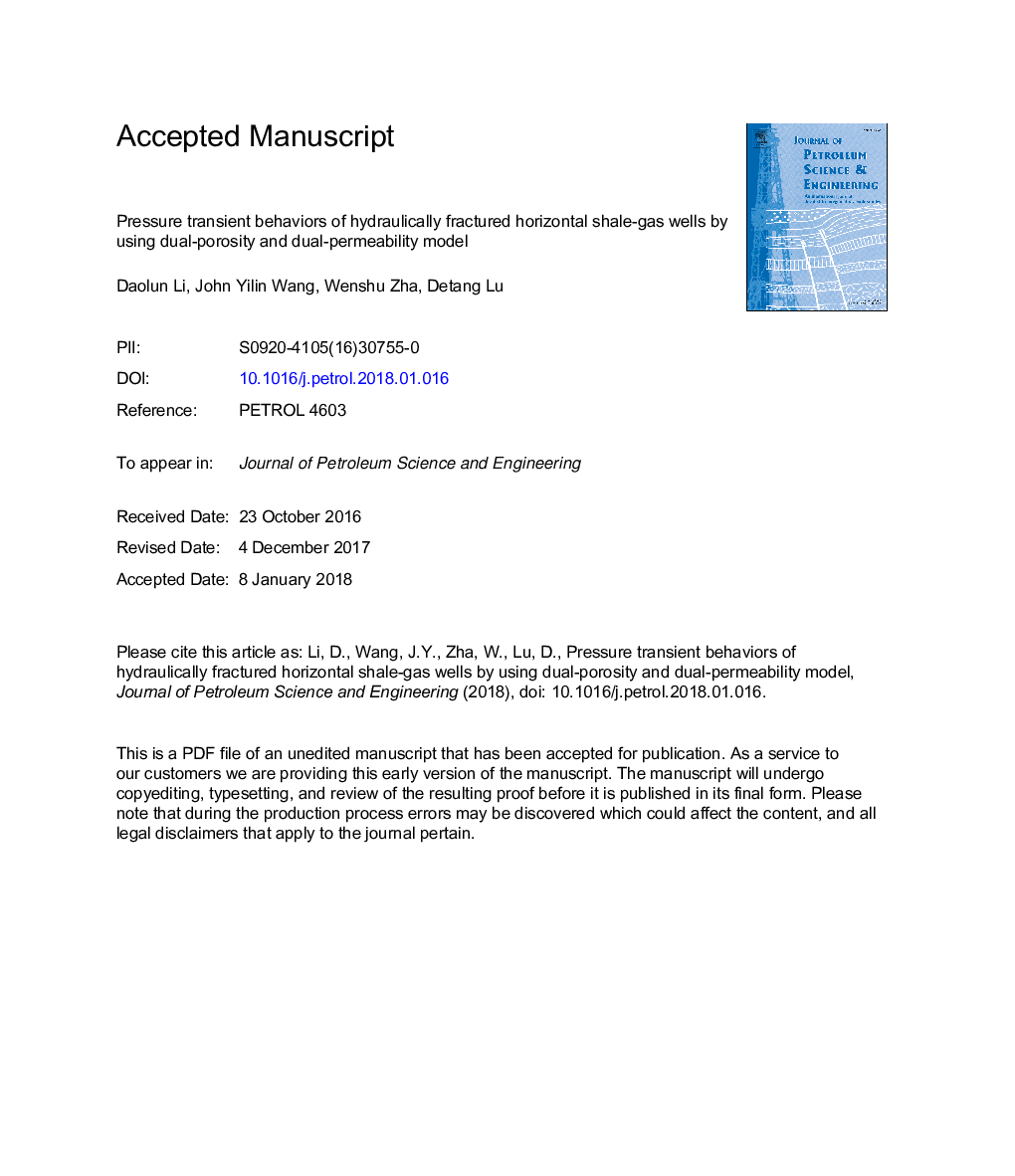| Article ID | Journal | Published Year | Pages | File Type |
|---|---|---|---|---|
| 8125245 | Journal of Petroleum Science and Engineering | 2018 | 41 Pages |
Abstract
A dual-porosity and dual-permeability (DPDP) model was developed to describe the fluids flow and transient pressure behaviors of multistage hydraulically fractured horizontal wells in shale-gas reservoirs by incorporating gas adsorption and gas permeability corrections. This 3-dimensional, 1-phase numerical model was developed using finite volume method and solved implicitly with unstructured PEBI (Perpendicular Bisection) gridding. Parametric studies were conducted to understand the pressure transient behaviors with effects of gas adsorption, permeability correction, transmissibility between fracture and matrix system (called inter-porosity flow ability, IPF), and natural fracture spacing. The results showed that pressure transient behaviors were not only controlled by the individual ultimate adsorption capacity (UAC) and IPF but rather the combination of IPF ability and UAC derived herein. The physics was that for a block by omitting the flow in matrix systems and accumulation term, the flow rate of free gas between the matrix cell and the fracture cell was equal to the flow rate caused by adsorbed or desorbed due to a pressure change in the matrix cell. This was the reason that if the IPF ability was relatively small, large amount of free gas would flow into the wellbore, which affected the pressure transient behaviors. This finding was quantified with a new correlation that was a function of IPF ability, UAC and pressure difference between fracture and matrix.
Related Topics
Physical Sciences and Engineering
Earth and Planetary Sciences
Economic Geology
Authors
Daolun Li, John Yilin Wang, Wenshu Zha, Detang Lu,
